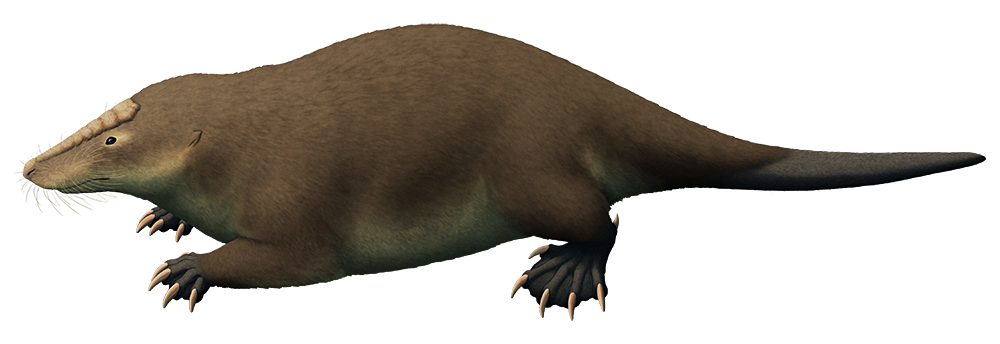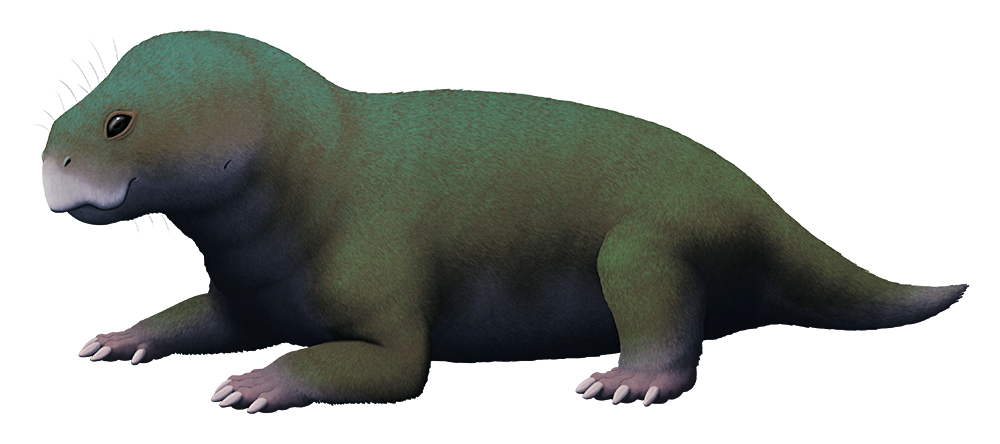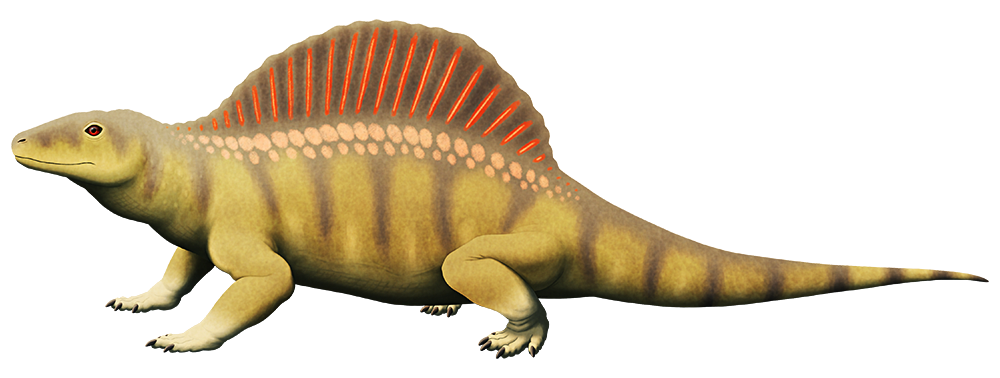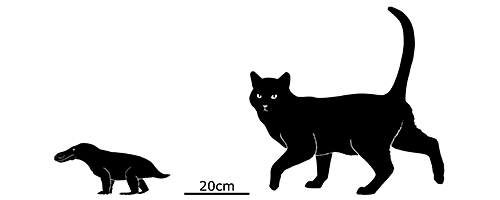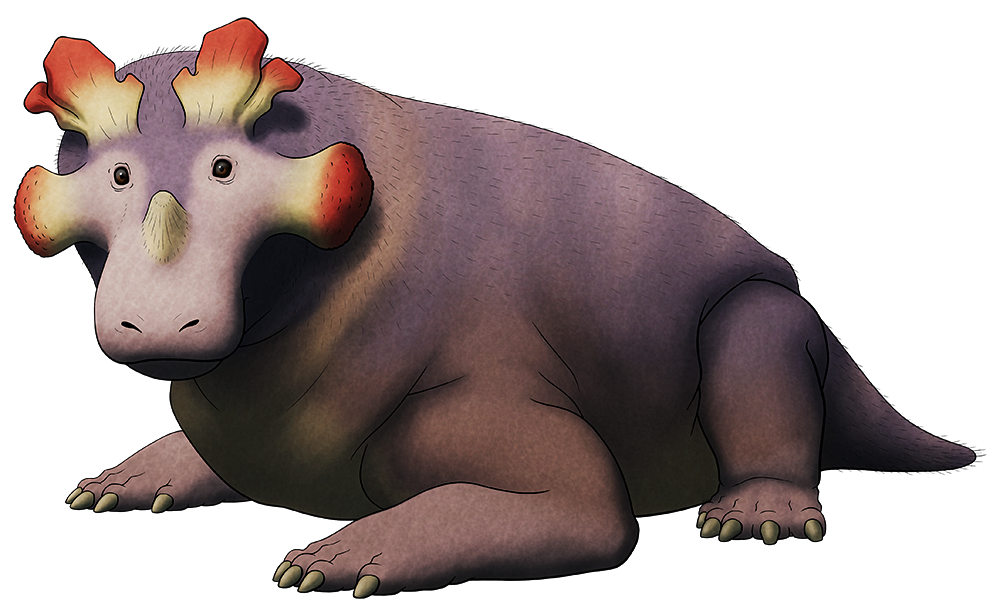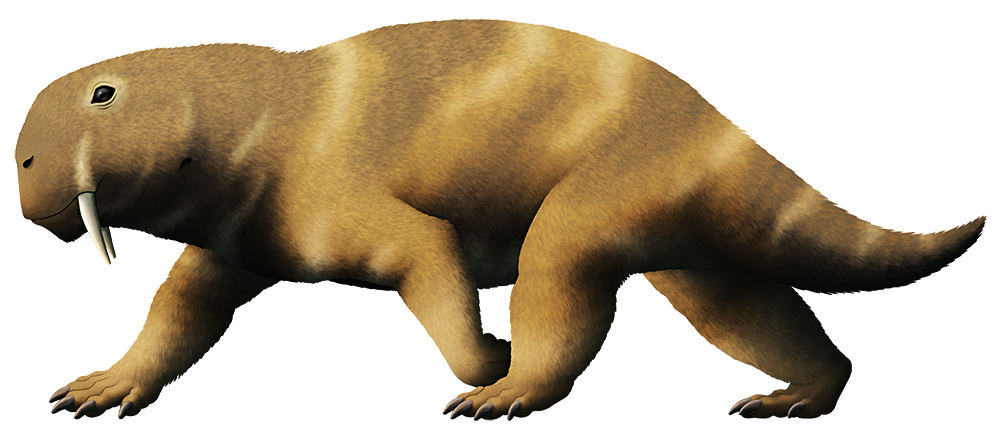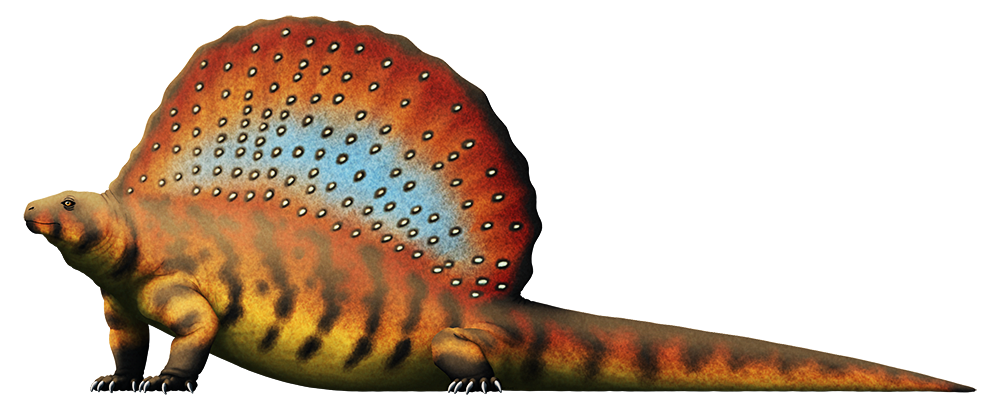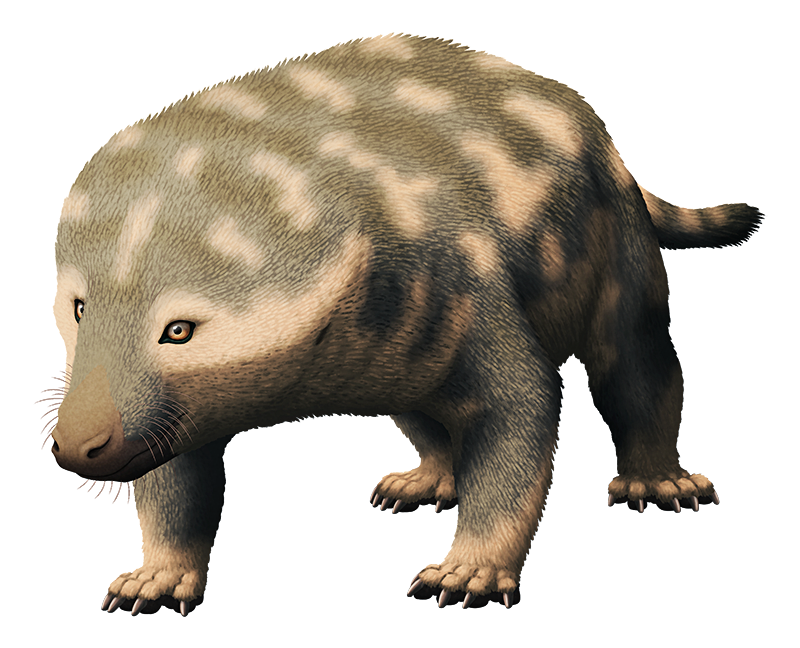Despite having a genus name that sounds more like it should belong to a cartoon dinosaur mascot for dental hygiene, Smilesaurus ferox was actually a real gorgonopsian, a predatory synapsid distantly related to modern mammals.
Living in South Africa during the Late Permian, around 259-254 million years ago, Smilesaurus was comparable to a medium-sized dog at around 1m long (3’3″). It had some of the longest sabre-like canine teeth of any known gorgonopsian, proportionally comparable to those of sabertoothed cats – and it may have hunted in a similar manner, using powerful grasping limbs to pin down struggling prey and then dispatching it with slashing bites.
…And it also turns out that when you don’t horribly shrink-wrap a gorgonopsian, you end up with something that looks rather like a bear-hippo.
(For some similarly chonky gorgonopsians, check out Tas’ @i-draws-dinosaurs reconstructions here. Bullet Man was definitely a bit of an inspiration in this.)


